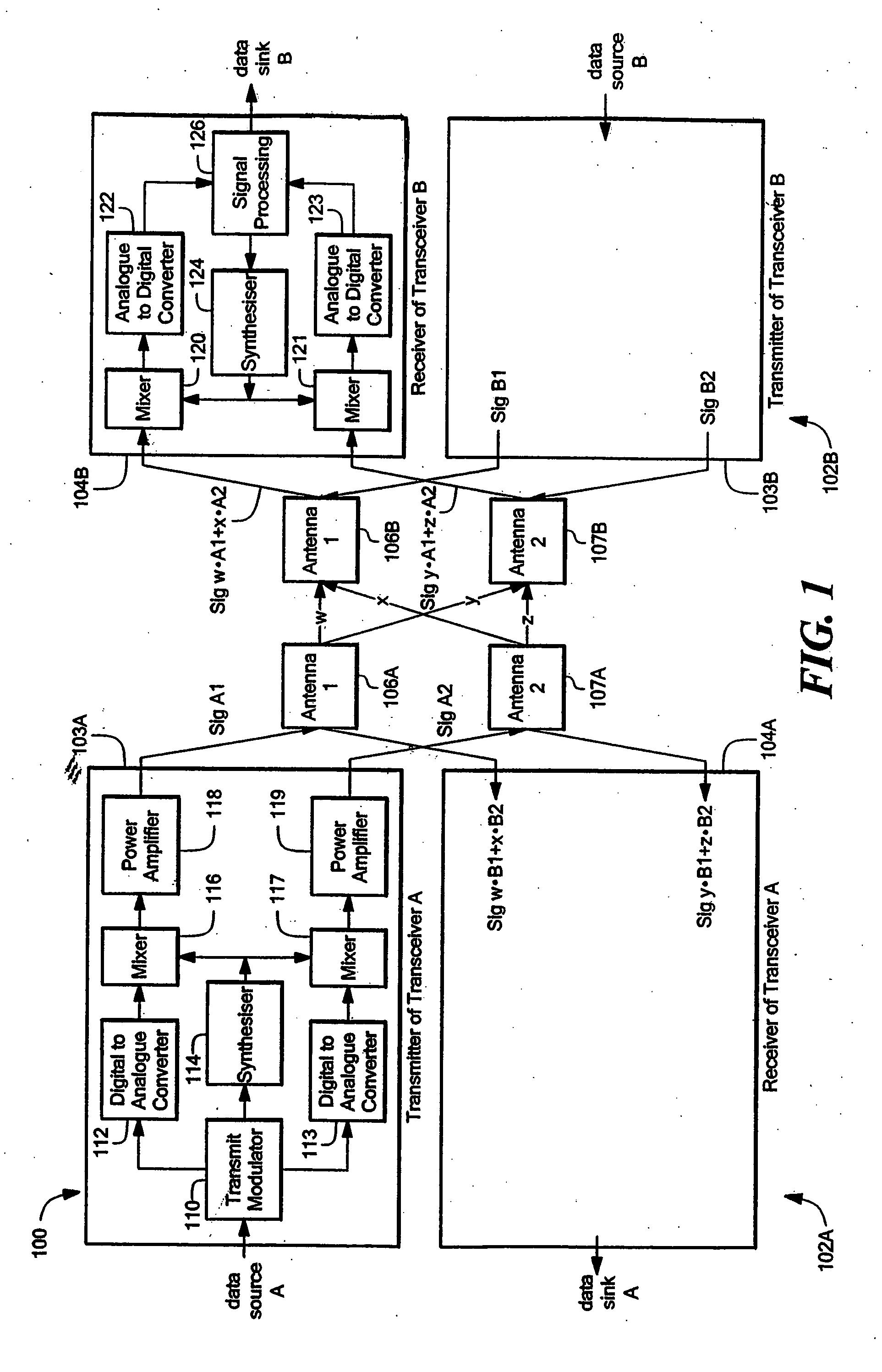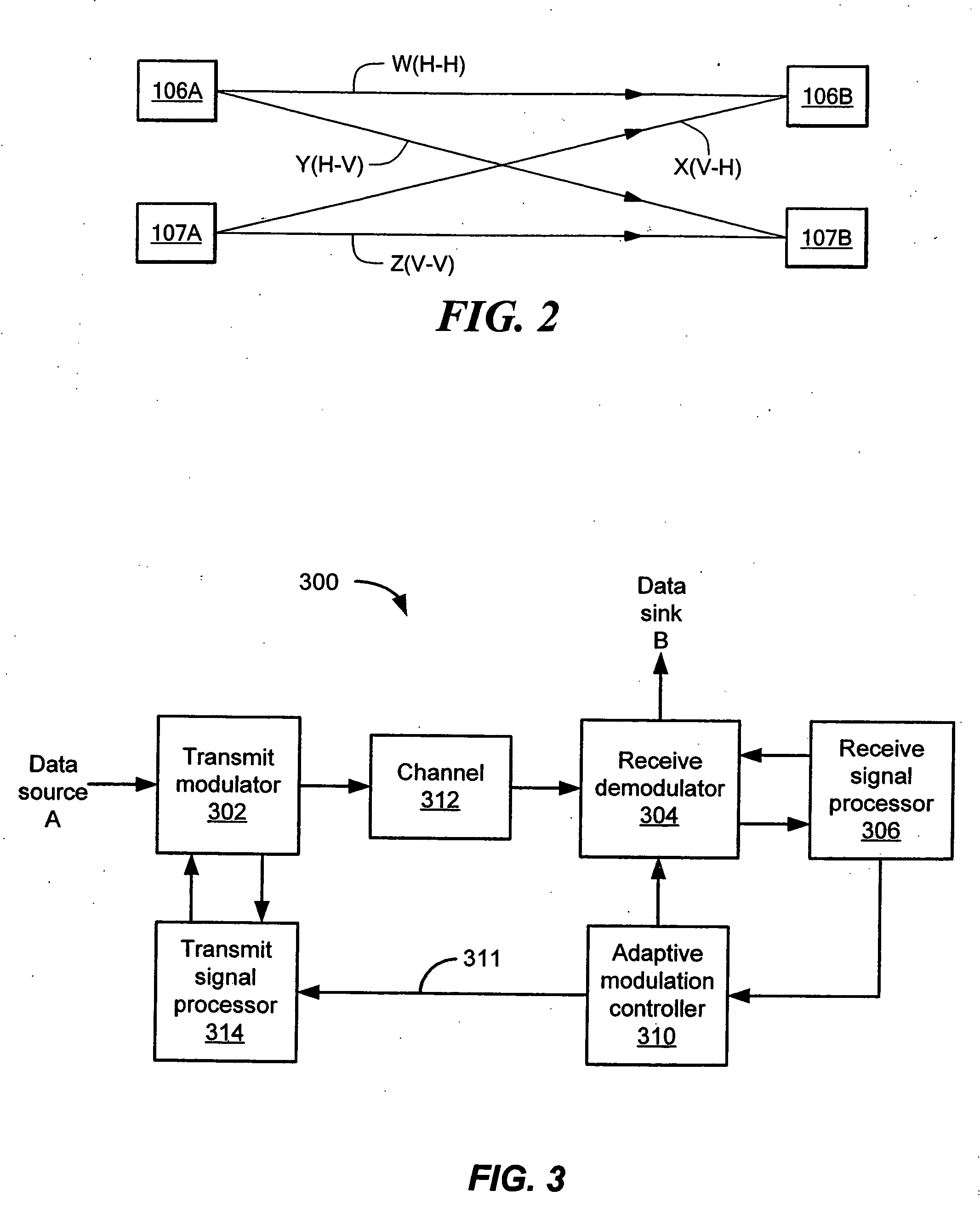Dual payload and adaptive modulation
a technology of adaptive modulation and payload, applied in the field of wireless broadband communications systems, can solve the problems of increasing the demand for higher data transmission rates, affecting the transmission speed of data, and limited communication bandwidth capacity, and achieve the effect of increasing the data transmission ra
- Summary
- Abstract
- Description
- Claims
- Application Information
AI Technical Summary
Benefits of technology
Problems solved by technology
Method used
Image
Examples
Embodiment Construction
[0039] The entire disclosure of U.S. Provisional Patent Application No. 60 / 644,281 filed Jan. 14, 2005 entitled DUAL PAYLOAD AND ADAPTIVE MODULATION is incorporated herein by reference.
[0040] A wireless broadband communications system is disclosed that provides higher performance and increased spectral efficiency in point-to-point and point-to-multipoint applications. The presently disclosed wireless communications system employs an adaptive modulation technique that determines information relating to a current condition or “state” of the propagation path between corresponding pairs of transmit and receive antennas for each communications channel available to the system, and selects an optimal transmission modulation mode and either a single channel of information flow (the “single payload mode”) or dual channels of information flow (the “dual payload mode”) for a given communications session based at least in part upon the current channel state information. The disclosed wireless ...
PUM
 Login to View More
Login to View More Abstract
Description
Claims
Application Information
 Login to View More
Login to View More - R&D
- Intellectual Property
- Life Sciences
- Materials
- Tech Scout
- Unparalleled Data Quality
- Higher Quality Content
- 60% Fewer Hallucinations
Browse by: Latest US Patents, China's latest patents, Technical Efficacy Thesaurus, Application Domain, Technology Topic, Popular Technical Reports.
© 2025 PatSnap. All rights reserved.Legal|Privacy policy|Modern Slavery Act Transparency Statement|Sitemap|About US| Contact US: help@patsnap.com



